Français
Finding Our Talk Season Two
- Episode 1: A Brighter Future - Mohawk
- Episode 2: Gentle Words - Maliseet
- Episode 3: The Spirit of Stories - Ojibway
- Episode 4: Language of The North - Naskapi
- Episode 5: Language of The Caribou People - Gwitchin
- Episode 6: Our Past Our Language - Secwepemc (Shushwap)
- Episode 7: Buffalo People - Dakota
- Episode 8 : Healing Power of Words - Dene
- Episode 9: Our Music is Our Language - Oneida
- Episode 10: Words from Our Scholars - Cree
- Episode 11: Words from Our Elders - Blackfoot
- Episode 12: Cultural Centres and Language
- Episode 13: The Dreamers - Dane-Zaa
Finding Our Talk Season One
Finding Our Talk Season Three
Episode 12: Cultural Centers and Language
We look at the important role that the Saskatchewan Indian Cultural Centre has played in strengthening cultural awareness and in establishing several educational institutions in Saskatchewan. We also visit the Tsi Ronteriwanonhnha language centre in Kanestake,Quebec whose doors remain open in the face of serious funding cutbacks.
Part 1
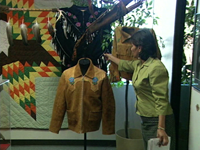 Linda Pelly Landrie is proud of the work the SICC has done over the years. The pride is evident in her voice as she talks about how the SICC was a key player in establishing the Saskatchewan Indian Federated College (SIFC), the Saskatchewan Indian Institute of Technologies (SIIT), the Indian Social Work Program and the Indian Teacher Education Program (ITEP). A long time advocate of First Nations culture and education, Pelly Landrie has worked at the centre since its opening working her way from receptionist to president. Daughter of the late Pauline Pelly, who was an Elder and counselor at SIIT, has also served as the president of the First Nations Confederacy of Cultural Education Centres (FNCCEC), a national association representing and advocating for First Nations cultural centre programs across Canada.
Linda Pelly Landrie is proud of the work the SICC has done over the years. The pride is evident in her voice as she talks about how the SICC was a key player in establishing the Saskatchewan Indian Federated College (SIFC), the Saskatchewan Indian Institute of Technologies (SIIT), the Indian Social Work Program and the Indian Teacher Education Program (ITEP). A long time advocate of First Nations culture and education, Pelly Landrie has worked at the centre since its opening working her way from receptionist to president. Daughter of the late Pauline Pelly, who was an Elder and counselor at SIIT, has also served as the president of the First Nations Confederacy of Cultural Education Centres (FNCCEC), a national association representing and advocating for First Nations cultural centre programs across Canada. 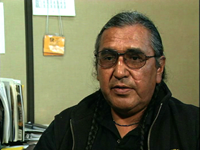
Cree language instructor Edie Hyggen takes her students on a tour of the SICC library at the beginning of every year. She invites us to come along with her and meet some of her students.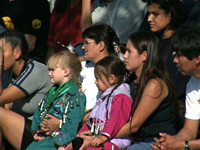
A mainstay of the SICC is its Language Retention Committees which are funded through the Saskatchewan Aboriginal Language Initiative (SALI). With one for each language, members meet several times a year to promote their language, develop words for new technology, share teaching materials and lobby for funding.
At a SALI working group meeting we meet Velma Goodfeather and Elaine Hay. Velma is a Dakota from Standing Buffalo First Nation and chair of the Lakota/Nakota/Dakota Language Retention Committee. She has been a language instructor and a band councilor whose portfolio was education. Elaine Hay is a Dene from Black Lake. The CO-chair of the Denesutine Language Retention Committee, Elaine is also a language developer at SICC.
Together, Elaine and Velma and the other SALI members discuss language issues such as the AFN's new criteria for funding language programs. We also talk to them about why they have chosen to be involved with the SICC, and how the retention program helps them fulfill their own role in language retention.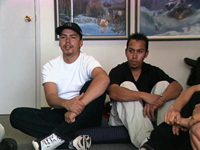
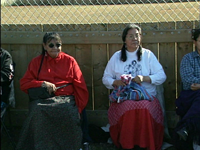 Part 2
Part 2
This section will look at a smaller language center in Kanetesake and its struggles to continue operation in an era of cultural and language cuts. In Kanetesake the school is often hailed as a victory for the Mohawk language, but for some the victory has been soured by the Band Council’s decision to cut funding to language by almost 90%. That cut in funding has meant staff layoffs at Tsi Ronterihwanonhnha Ne Kanien’keha Owen:na Orihwa’shon:’a Centre. The Centre creates Mohawk language curriculum for teachers and students at the Immersion school. It is there we meet Ellen Gabriel, an illustrator and curriculum technician, who offers insight on the funding cutbacks.
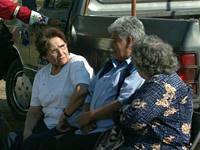 Language Keeper
Language Keeper
The late Pauline Pelly was an outspoken advocate for treaty rights, First Nation traditions, language and culture and especially education. A residential school survivor, Pauline continued school and eventually earned a degree in sociology. She believed, however that her greatest accomplishment was in learning her Saulteaux language and culture. Fondly remembered for her storytelling and warmth Pauline spent the last 12 years of her life as a resident Elder at the Saskatchewan Indian Institute of Technologies (SIIT). Through her daughter and others we learn of the impact Pauline had on those around her.

